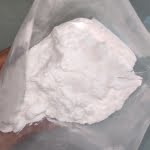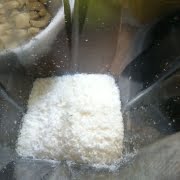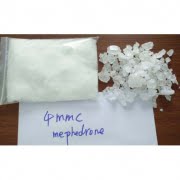Mephedrone 4-methylmethcathinone 4-MMC
Rated 3.43 out of 5 based on 14 customer ratings
(15 customer reviews)
$150.00 – $2,500.00
Mephedrone is a stimulant drug belonging to the chemical family of the cathinone’s group of drugs.
Cathinones are a group of drugs related to amphetamine compounds like speed and ecstasy.
SKU: N/A
Categories: Buy Research Chemicals, Research Chemicals
Tags: 4-MMC For Sale, buy mephedrone, buy mephedrone bath salts, buy mephedrone online, buy mephedrone online canada, buy mephedrone online next day delivery, buy mephedrone plant food, buy mephedrone powder online, buy mephedrone us, buy mephedrone usa, mephedrone bath salts where to buy, mephedrone buy online, where can i buy mephedrone, where can you still buy mephedrone, where to buy bath salts mephedrone, where to buy mephedrone, where to buy mephedrone plant food
The Origin and Evolution of Buy Mephedrone: A Synthetic Stimulant with Controversial Legacy
Introduction
Buy Mephedrone, a synthetic stimulant belonging to the class of drugs known as cathinones, has garnered significant attention over the past two decades. Its rapid rise from obscurity to global prominence, and subsequent regulation, highlights the complex dynamics of drug discovery, misuse, and control. This article delves into the origins of mephedrone, tracing its chemical roots, early uses, societal impact, and the regulatory responses that followed its emergence.
The Chemical Roots: Cathinone’s and the Khat Plant
To understand the origin of mephedrone, it is essential to first explore its chemical lineage. Mephedrone is a derivative of cathinone, a naturally occurring alkaloid found in the khat plant (Catha edulis). Khat is a shrub native to East Africa and the Arabian Peninsula, where it has been chewed for centuries for its stimulant effects. The active ingredient in khat, cathinone, is chemically similar to amphetamines and induces euphoria, increased energy, and alertness.
Cathinone itself was first isolated from khat in the early 20th century, but it wasn’t until the latter half of the century that synthetic derivatives began to be explored. These synthetic cathinones, designed to mimic the effects of cathinone, emerged in the pharmaceutical industry as potential therapeutic agents. However, most of these compounds were never developed into approved medications, as their psychoactive properties and potential for abuse became apparent.
The Synthesis of Mephedrone
Mephedrone, chemically known as 4-methylmethcathinone (4-MMC), is a synthetic cathinone that was first synthesized in 1929 by Saem de Burnaga Sanchez, a French chemist. Despite its early synthesis, mephedrone remained largely unknown for several decades, with no significant use or recognition in either medical or recreational contexts.
It wasn’t until the early 2000s that mephedrone re-emerged, this time as a recreational drug. Reports suggest that it was first synthesized for recreational use in underground laboratories in Israel, and it quickly spread to Europe and beyond. The precise reasons for its resurgence are unclear, but its chemical similarity to other stimulants, such as MDMA (ecstasy), likely played a role in its appeal to recreational users.
Early Use and Popularity
Mephedrone gained popularity in the mid-2000s, particularly in the United Kingdom and other parts of Europe. It was marketed as a “legal high” and sold under various names, including “Meow Meow,” “MCAT,” and “Bubbles.” The drug was often sold online or in head shops, labeled as “plant food,” “bath salts,” or other innocuous-sounding products to evade legal restrictions.
Users were drawn to mephedrone for its stimulant effects, which were described as a combination of the euphoria of MDMA and the stimulating effects of cocaine. The drug became particularly popular in the clubbing and party scenes, where it was often used as a cheaper and legal alternative to other stimulants . black tar heroin
By 2009, mephedrone had become one of the most widely used recreational drugs in the UK, surpassing even ecstasy in some regions. Its rapid rise in popularity was fueled by its availability, affordability, and the perception that it was a safer alternative to illegal drugs.
The Impact and Controversy
As mephedrone use spread, so did reports of its negative effects. Users began to experience a range of adverse effects, including anxiety, paranoia, agitation, and in some cases, severe physical symptoms such as chest pain, palpitations, and vomiting. There were also reports of users developing a strong psychological dependence on the drug.
The media quickly picked up on these reports, and mephedrone was thrust into the spotlight. Sensationalist stories about the drug’s dangers began to circulate, with some reports linking it to a number of deaths. While many of these reports were later found to be exaggerated or inaccurate, they contributed to a growing public concern about the drug.
In addition to the health risks, mephedrone’s legal status also became a major point of controversy. Because it was a new synthetic compound, it had not been specifically classified as an illegal substance in most countries. This legal loophole allowed it to be sold openly and legally, despite its potential for harm. The debate over how to classify and regulate such substances, often referred to as “legal highs” or “designer drugs,” became a central issue in drug policy discussions.
Regulatory Response
The rise of mephedrone prompted swift action from governments and regulatory bodies. In the UK, the Advisory Council on the Misuse of Drugs (ACMD) conducted a review of the substance in 2010. The review highlighted the potential harms associated with mephedrone use and recommended that it be classified as a Class B drug under the Misuse of Drugs Act 1971, making its sale, possession, and distribution illegal. Where can I buy crystal meth online
The UK government accepted the ACMD’s recommendation, and mephedrone was banned in April 2010. Other countries in Europe and beyond followed suit, enacting similar bans on mephedrone and other synthetic cathinone. The rapid response by regulators was seen as a necessary step to curb the spread of mephedrone use, but it also raised questions about the challenges of regulating new and emerging substances in an increasingly globalized and digital world.
The Aftermath: Decline and Legacy
Following its classification as an illegal drug, mephedrone use declined significantly in many regions. The ban led to a reduction in its availability, and many users turned to other substances or ceased use altogether. However, the legacy of mephedrone continued to be felt in various ways.
One of the most significant impacts of the mephedrone saga was the shift in how new psychoactive substances (NPS) are regulated. The rapid emergence of mephedrone and similar substances highlighted the limitations of existing drug control frameworks, which were often reactive rather than proactive. In response, many countries adopted new approaches to regulating NPS, including blanket bans on entire classes of substances and the use of temporary bans while assessments were conducted.
The mephedrone episode also had a lasting impact on public perceptions of “legal highs” and the risks associated with them. The idea that a substance could be legal yet potentially more dangerous than illegal drugs challenged common assumptions about drug safety. This, in turn, led to greater awareness and caution among the public regarding the use of unregulated substances.
Conclusion
The story of mephedrone is a complex one, involving the intersection of chemistry, culture, policy, and public health. From its origins as a synthetic derivative of a naturally occurring stimulant, to its rise as a popular recreational drug, and its eventual classification as an illegal substance, mephedrone’s journey reflects the broader challenges of managing emerging drugs in a rapidly changing world.
As new synthetic substances continue to emerge, the lessons learned from the mephedrone experience remain relevant. The need for robust, adaptive regulatory frameworks, informed public health strategies, and ongoing research into the effects of these substances is critical in addressing the evolving landscape of drug use. The story of mephedrone serves as a reminder of the unpredictable nature of drug trends and the importance of vigilance in both policy and public health.
| Quantity | 5 grams, 10 grams, 30 grams, 50 grams, 100 grams, 250 grams, 500 grams |
|---|
15 reviews for Mephedrone 4-methylmethcathinone 4-MMC
3.4
Based on 14 reviews
| 5 star | 35 | 35% |
| 4 star | 21 | 21% |
| 3 star | 14 | 14% |
| 2 star | 7 | 7% |
| 1 star | 21 | 21% |
Showing 3 of 14 reviews (4 star). See all 14 reviews
1-5 of 14 reviews
Sorry, no reviews match your current selections
Add a review
 Mephedrone 4-methylmethcathinone 4-MMC
Mephedrone 4-methylmethcathinone 4-MMC
Rating*
0/5
* Rating is required
Your review
* Review is required
Name
* Name is required
Email
* Email is required
Add photos or video to your review
Related Products
-
MDAI (5,6-methylenedioxy-2-aminoindane)
$400.00 – $5,500.00MDAI (5,6-Methylenedioxy-2-aminoindane) is a synthetic research chemical that has been studied for its potential effects as a psychoactive substance. It is a member of the aminoindane class, which is chemically similar to MDMA (Ecstasy) but lacks the typical amphetamine structure.
Key Points:
- Chemical Structure: MDAI is structurally related to MDMA but is designed to be non-neurotoxic. It has a methylenedioxy group and an aminoindane core.
- Effects: MDAI is reported to produce empathogenic effects similar to MDMA, including feelings of empathy, euphoria, and sociability. However, it lacks stimulant effects and is not known to cause hyperactivity or increased energy.
- Legality: The legal status of MDAI varies by country, with some nations classifying it as a controlled substance, while in others, it may be unregulated or legal for research purposes.
- Usage: MDAI has been used in research settings to study its effects on serotonin release and its potential as a non-neurotoxic alternative to MDMA. It has also been used recreationally, though with caution due to limited research on its safety profile.
MDAI is primarily of interest to researchers and those exploring alternatives to MDMA, but it should be approached with caution due to the lack of comprehensive studies on its long-term effects.
-
A-PVP Crystals α-Pyrrolidinovalerophenone (α-PVP, O-2387, β-keto-prolintane, Prolintanone)
$150.00 – $2,500.00![Buy A-PVP Crystals near me]()
Buy A-PVP Crystals near me
chemical name: 1-phenyl-2-(1-pyrrolidinyl)-1-pentanone;
Other names: α-Pyrrolidinopentiophenone α-PVP, O-2387, alpha-PVP, a-pvp ;
Purity and form: white crystalline form, the maximum purity 99.9%;
Effect: stimulation and euphoria, speed;
CAS number: 14530-33-7;
Formula: C15H21NО;
Molar mass: 231,33 g/mol
-
MDPV (Methylenedioxypyrovalerone)
Rated 3.00 out of 5$150.00 – $1,800.00![Mdpv]()
Methylenedioxypyrovalerone (MDPV) is a stimulant of the cathinone class that acts as a norepinephrine–dopamine reuptake inhibitor (NDRI). It was first developed in the 1960s by a team at Boehringer Ingelheim.
Its activity at the dopamine transporter is six times stronger than at the norepinephrine transporter and it is virtually inactive at the serotonin transporter.
Discreetly buy mdpv from us now. Best price guarantee MDPV (Methylenedioxypyrovalerone) buy at low price.
We have the best quality MDPV for sale on our online store
we as well offer discreet delivery and payment is secure with 100% privacy guaranteed at all times.
-
3MMC Magic Powder
$350.00 – $3,850.003-MMC, also known as 3-Methylmethcathinone, is a synthetic stimulant that belongs to the cathinone class, which is chemically related to substances like methcathinone and mephedrone (4-MMC). It is often marketed under names like “Magic Powder” in some contexts, particularly in the online or underground markets.
3MMC Magic Powder information:
Formal name: 3-Methylmethcathinone, also known as 3MMC and metaphedrone
CAS Number: 1246816-62-5
Formula: C11H15NO
Purity: ≥98%
Key Points:
- Chemical Structure: 3-MMC is structurally similar to mephedrone (4-MMC) and acts as a stimulant with effects on the central nervous system. It is designed to mimic the effects of MDMA and amphetamines.
- Effects: Users report effects similar to other cathinones and stimulants, including euphoria, increased energy, enhanced sociability, and stimulation. It may also cause increased heart rate, elevated blood pressure, and feelings of empathy.
- Legality: The legal status of 3-MMC varies widely depending on the country. In some places, it is classified as a controlled substance, while in others, it may still be available through online vendors or in gray markets. Many countries have been moving to control or ban the substance due to concerns over its safety and potential for abuse.
- Risks and Safety: There are significant risks associated with the use of 3-MMC, including the potential for addiction, cardiovascular problems, and neurotoxicity. Because it is a relatively new substance, there is limited research on its long-term effects, making it difficult to assess its full safety profile.
- Recreational Use: Despite being marketed as “Magic Powder,” a term often used to suggest a desirable and potent substance, 3-MMC is associated with a range of potential adverse effects. Users often seek it as a legal or semi-legal alternative to other banned stimulants, but its safety and legality are questionable.
Given the potential risks and the lack of comprehensive studies on 3-MMC, it is advised to approach this substance with caution, keeping in mind the legal implications and possible health hazards.












You always have my product on hand and it’s a decent price for what it does for me. Thank you for keeping this available! You are the best.
Hello, its good piece of writing on the topic of media print, we all know
media is a enormous source of data.
Here is my blog … website
Hi to all, how is all, I think every one is getting more from this web site, and
your views are good for new users.
Feel free to surf to my website irmicrosoftstore.ir
It’s amazing for me to have a web site, which is
useful designed for my experience. thanks admin
My site :: Scam Account
I read this piece of writing completely on the topic of the resemblance of newest and earlier technologies,
it’s awesome article.
Visit my website: microsoftme.net